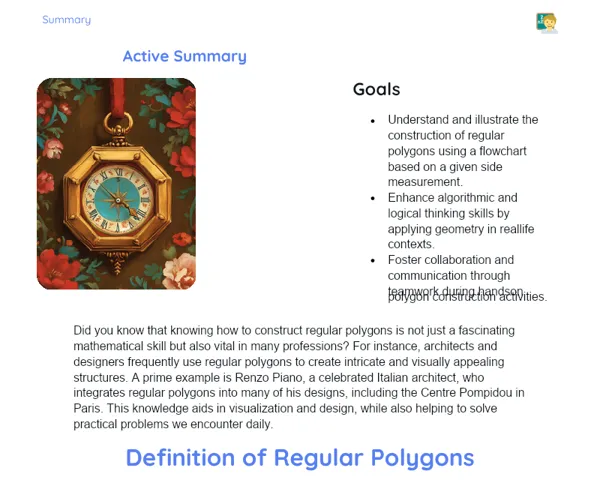Summary Tradisional | Base Change
Contextualization
Numbers play a crucial role in our everyday lives – whether counting items in the market, keeping track of time, or managing finances. The most recognised system is the decimal system (base 10), using ten digits (0-9). Its widespread use is due to its simplicity and historical adoption in our education system. However, there are several other numbering systems, each with its unique traits and applications.
Take the binary system (base 2) for instance, which employs just 0 and 1. This system is the backbone of modern computing, essential for devices such as computers and smartphones that most of us use daily. Additionally, systems like base 5 (quinary) and base 12 (duodecimal) have their own niche areas where they prove useful. Gaining an understanding of these various bases and knowing how to convert numbers between them is not only beneficial for solving mathematical problems but also for grasping the digital world around us.
To Remember!
Decimal Numbering System
The decimal system, or base 10, is the most commonly used numbering system worldwide. It utilises ten digits – 0, 1, 2, 3, 4, 5, 6, 7, 8, and 9. Each digit’s position indicates a power of 10, making mathematical operations and counting quite intuitive. Its popularity is largely due to its straightforward structure and its long-standing presence in our academic and day-to-day transactions.
A key aspect of the decimal system is positional value. For example, in the number 345, the digit 3 denotes 300 (3 x 100), 4 signifies 40 (4 x 10), and 5 represents 5 (5 x 1). This clear structure aids in reading and understanding numbers effortlessly.
Furthermore, the decimal system forms the base for most measurement standards and financial dealings. Its presence is so pervasive that it is rare to encounter any other system in ordinary life.
-
Utilises ten digits: 0-9.
-
Each place value is a power of 10.
-
Positional value defines the worth of each digit.
Binary Base (Base 2)
The binary system relies on just two digits: 0 and 1. It forms the foundation of all computer operations, as every digital device operates on binary principles. In this system, each digit's position represents a power of 2, allowing computers to perform operations both swiftly and efficiently.
Here, each digit is known as a bit. The combination of these bits can represent a wide range of data including numbers, text, and images. For example, the binary number 1011 converts to the decimal number 11. A sound grasp of binary-to-decimal conversion is essential, especially for those involved in technology and computer science.
Its simplicity also means that designing electronic circuits becomes a streamlined process, as every bit is either in an on (high voltage) or off (low voltage) state—hence its widespread use in gadgets like computers, smartphones, and tablets.
-
Uses two digits: 0 and 1.
-
Each place indicates a power of 2.
-
Critical for digital computing and data processing.
Quinary Base (Base 5)
The quinary system (base 5) employs five digits: 0, 1, 2, 3, and 4. Each digit's position corresponds to a power of 5. Although not as common as the decimal or binary systems, it finds relevance in certain traditional and cultural practices.
In quinary counting, objects are often grouped in fives. For instance, the quinary number 132 represents the decimal number 42. Learning how to switch between decimal and quinary not only offers a different perspective on counting but also helps solve unique mathematical problems.
While not widely used in our daily transactions, the quinary system gives us interesting insights into historical methods of counting and the development of diverse numeral systems.
-
Uses five digits: 0-4.
-
Each place holds a power of 5.
-
Provides a historical perspective on counting methods.
Duodecimal Base (Base 12)
The duodecimal system (base 12) makes use of twelve digits: 0, 1, 2, 3, 4, 5, 6, 7, 8, 9, along with A and B, where A and B stand for 10 and 11 respectively. Every digit's position represents a power of 12. This system finds applications in specialised areas such as timekeeping and in various ancient practices.
Counting in base 12 involves grouping items in sets of twelve. For example, the duodecimal number 3B corresponds to the decimal number 47. Being able to convert between decimal and duodecimal is useful for understanding alternative counting approaches and tackling certain mathematical challenges.
One practical benefit of the duodecimal system is that the number 12 has more factors (1, 2, 3, 4, 6, 12) than 10, which can simplify some calculations. Studying this system helps us appreciate how different cultures have approached numerical representation.
-
Employs twelve digits: 0-9, A, B.
-
Each position signifies a power of 12.
-
Offers practical benefits due to greater divisibility.
Base Conversion
Converting numbers from one base to another is an important skill useful both in academics and the practical world. This process involves changing a number's base using defined methods and procedures.
To convert a decimal number to any other base, you repeatedly divide the number by the new base and record the remainders. These remainders, when viewed in reverse order, give the number in the new base. For instance, converting the decimal number 25 to binary involves dividing by 2 repeatedly to eventually produce the binary number 11001.
Conversely, converting a number from another base to decimal means multiplying each digit by its corresponding power and summing up these values. For example, converting binary 1011 to decimal involves calculating (1 x 2^3 + 0 x 2^2 + 1 x 2^1 + 1 x 2^0) to obtain 11. These conversion techniques enhance our understanding of different numbering systems and their applications.
-
Involves changing one base to another.
-
Decimal to other bases via successive division.
-
Other bases to decimal by multiplying digits with their positional powers.
Key Terms
-
Decimal Numbering System: Uses 10 digits (0-9).
-
Binary Base (Base 2): Uses 2 digits (0 and 1).
-
Quinary Base (Base 5): Uses 5 digits (0-4).
-
Duodecimal Base (Base 12): Uses 12 digits (0-9, A, B).
-
Base Conversion: Transforming numbers from one base to another.
Important Conclusions
In today's lesson, we explored a variety of numbering systems – starting from the familiar decimal system, the crucial binary system powering our digital devices, to less common ones like quinary and duodecimal. We examined the historical and practical importance of each system and learned how to perform base conversions, a really handy skill in both mathematics and technology.
The relevance of these concepts is evident in their direct application to everyday life and various professional fields, from simple transactions to the functioning of electronic devices we depend on. This understanding paves the way for a broader appreciation of both mathematics and technological innovations.
I encourage students to delve deeper into these topics, as a strong grasp of numerical bases can be a robust foundation for advanced studies in algorithms, programming, and other tech-oriented fields. Regular practice of base conversion will certainly help consolidate these concepts and spark further academic interest.
Study Tips
-
Practice converting numbers between various bases regularly to build familiarity with the methods.
-
Explore online tutorials, interactive videos, and simulation tools that demonstrate these concepts in action.
-
Tackle additional problems on numbering systems and base conversion to boost your confidence and understanding.



